Visiting Patagonia was my dream since I could read a map. Back in the ages when the internet was not a thing for searching information I used to browse old-school atlas and set eyes on this southernmost piece of land that many called the end of the world. I had the pleasure of visiting Patagonia in both Chile and Argentina and would like to help others plan the perfect trip.
When you visit a place so distant, it requires thorough planning. Do you want to know when is the best time to visit Patagonia so you can get ready for maybe once in a lifetime trip to the end of the world? I’m glad you said yes. Read on.
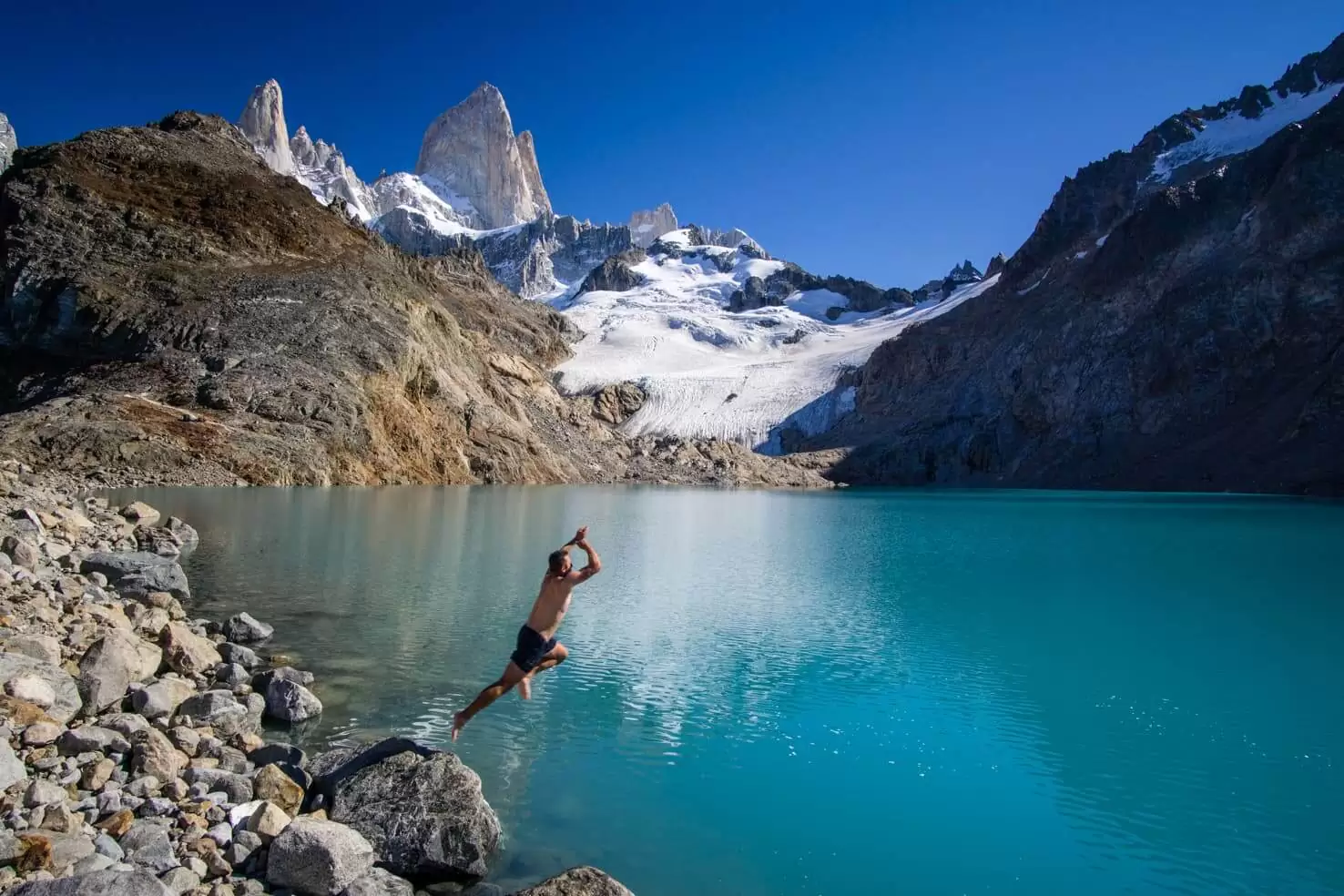
What exactly is Patagonia?
Patagonia is a region in Southern Chile and Argentina. The northern edge of Patagonia in Chile is in line with Puerto Montt and the Argentinian border is a little bit further north in line with Neuquén city.
Most of the area is located in Argentina and by looking on google earth you will notice that the Argentinian side is brown – dry desert and farmland. On the other hand, the Chilean side is green white and hilly – a moist, lush forest with tons of fjords and a heap of ice. To be fair, even Argentina has some natural wonders. All of them are on the border region with Chile.
Most resources and tour agencies are trying to sell the idea of only a few places such as Torres del Paine, Perito Moreno Glacier, and Tierra del Fuego. But there is much more to Patagonia than these tourist magnets. The selection of the best places is listed further in the article.

Source: Redgeographics
When is the best time to visit Patagonia?
For most travellers coming to Patagonia might be their first trip to the southern hemisphere and more especially to the southernmost places in the world of the non-artic continent.
As you might recall from Geography classes Southern hemisphere has opposite weather compared to the Northern half. That means summer is between December and March, winter is between June and September and so on. Read the season description and decide on your preferences.
Our most important factor when we were deciding when to come was to avoid crowds while still having decent weather. We recommend coming to Patagonia in March and April or the beginning of November if your goal is the same.
READ FOR INSPIRATION
50 insane pictures of Chile to inspire your travels

Weather in Patagonia
Patagonia and mainly the southern part is the only place in the southern hemisphere that has real four seasons. You won’t find proper winter in New Zealand or Australia or South Africa.
The distance from Cape Horn in the south to the north of Chilean Patagonia is about 1700km, for comparison, it is about the same distance as from New York to Miami so you can imagine how weather can be different throughout.
Another important thing to keep in mind is, even when you are not travelling to high altitudes, you will experience mountainous weather which is unpredictable. Any sunny day can turn into a storm or vice versa. Have warm and waterproof layers ready in a backpack.
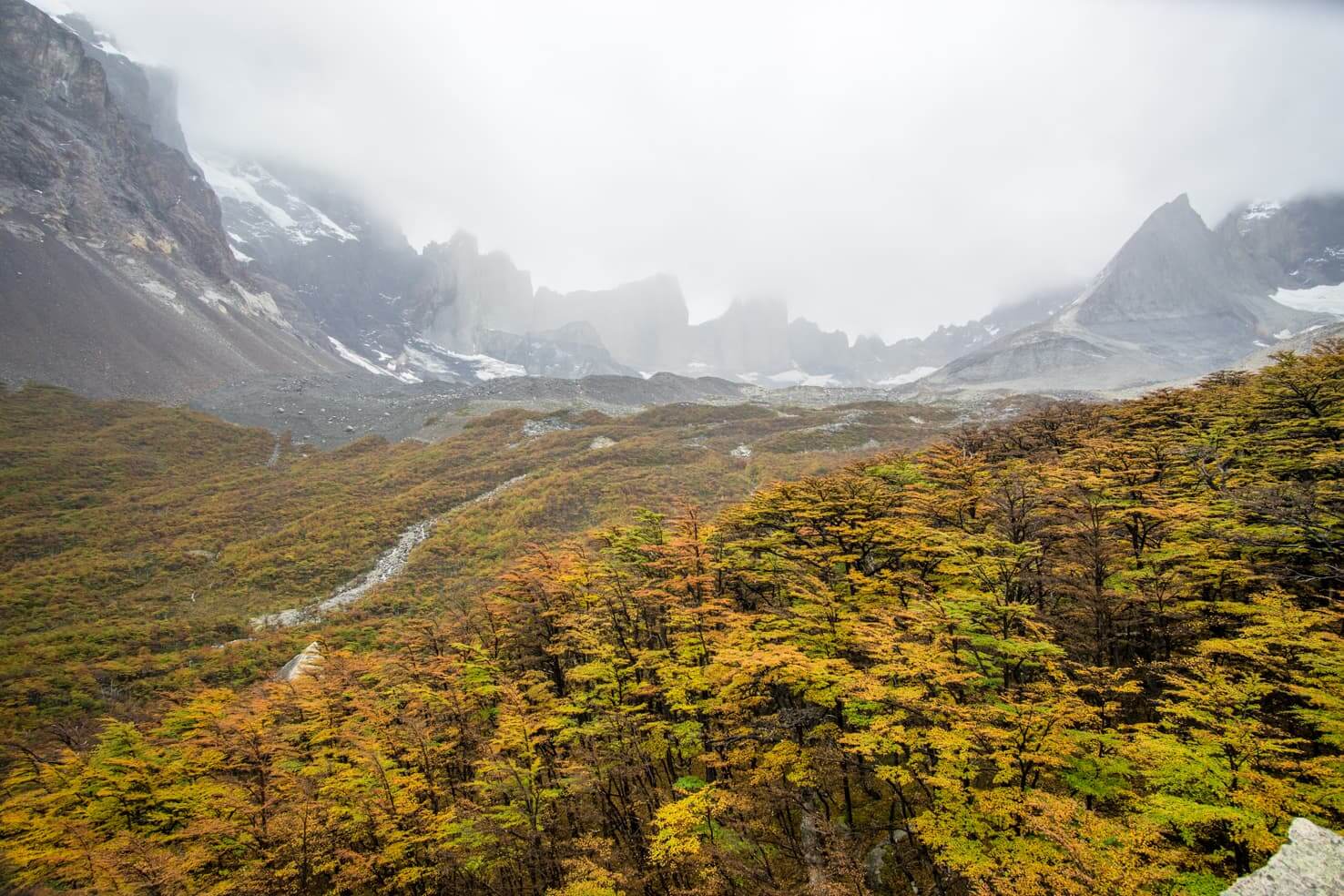
Most important things to know about weather in Patagonia:
- North – on average is warmer by 5°C than south, in winter it rains more than in summer,
- West (Chilean and Andean area) – considerably more humid, plenty of showers, the coast is quite cloudy, warmer nights
- South Patagonia – every other day might be raining (snowing in winter), with the winds and humidity you will feel cold even during summer. The ozone hole is fairly frequent (higher risk of skin cancer)
- East – dry and clear skies, cold nights, warm and constant winds in summer.
Note: all of the seasons are long-term average and each year can be different by 15 days or more. See rain/snowfall charts and monthly temperature averages in:
- Bariloche (north)
- Puerto Montt (north)
- Coyhaique (center)
- El Calafate
- Puerto Natales (Torres del Paine National Park)
- Puerto Williams (south)
READ MORE
Interesting facts about Chile

Patagonian seasons
Winter in Patagonia (June-September)
Many places in Patagonia receive snowfall during winter. Snow doesn’t stay on the roads for a whole winter as it happens in the Northern hemisphere. Temperatures can drop to negative numbers in places further from the ocean and days are quite short. Higher mountains stay covered by snow for the whole winter and in Patagonia, you will find many open ski resorts.
Some attractions can be closed such as backside of Torres del Paine National Park. Many hostels and hotels are closed during winter, but you can experience almost Alaskan-like solitude without fear of being eaten by bears, clear skies and much fewer winds. This is the best time to come to see pumas descending from mountains into warmer valleys.
Spring in Patagonia (October-November)
Spring is considered a shoulder season in Patagonia starting in October. Hotels have lower prices than during the high season and usually don’t have to be booked far in advance. In the northern parts, you will already get significantly warmer weather; at the same time in the south around Puerto Williams snow will be still covering some mountains.
November is the month when north of Patagonia will get noticeably drier. Spring is also a perfect time to observe wildlife and their newborns. Keep in mind that the ozone hole is the biggest during spring from September to November and you need to cover your skin and use sunscreen.

Patagonian Summer (December-February)
As most of the travellers visit during the summer months many places can burst at the seams. Especially Perito Moreno Glacier or Torres del Paine National Park. Summer months are best for a road trip through the Carretera Austral in Chile. January and February in Patagonia are also school holidays and locals make it even more crowded. On the other hand, it’s warm and the weather is more stable, so it’s overall nice for Chile and Argentina tours.
Summer gets also the strongest winds that can reach up to 120 km/h in gusts. The wind is comparable to any other wind gusts during storms in the mountains of North America or Europe. Temperatures during the summer months can pass 25°C in northern areas and 20°C in southern places.
Fall in Patagonia (March-May)
The end of summer is the best time for hiking in Patagonia. March has still many days with summer temperatures and it is not as windy as in previous months but also expect a little bit of morning frost on your tent. The last month for trekking in Torres del Paine is April, many camps on the backside close in mid-April.
Famous big ruptures of Perito Moreno Glacier are usually occurring in March once in four to five years.

READ NEXT
Chile itinerary for 2 weeks & adventure travel guide to backpacking Chile
Best time to visit Patagonia for sports activities
Patagonia can be considered one of the last places unspoiled by human activity. Therefore there is plenty of opportunities to experience great trekking, hiking or glacier trekking. See below when and where is the best time to do these activities:
- Hiking – November to April (Isla Navarino, Torres del Paine, El Chalten, Aysén Region, Bariloche)
- Biking/touring – December to April (from Puerto Montt/Bariloche to Puerto Williams/Ushuaia)
- Climbing – March to April (Torres del Paine, Fitz Roy, San Valentin)
- Road trip – year-round (Carretera Austral)
- Rafting & kayaking – November to March (Futaleufú, Rio Baker, General Carrera Lake, Chilean Fjords)
- Glacier trekking – December to April (both Patagonian Icefields and their glaciers)
- Skiing – June to September (Bariloche, Ushuaia, Coyhaique, Lake district in Chile)

Best time for great pictures of wildlife and natural wonders
Almost all types of wildlife inhabit the land of Patagonia year-round. None of these animals hibernate so the best time for photography depends on your personal preferences what you want to photograph and which colours you like.
Noticeable animals are guanaco, condor, puma, seals, and penguins. Some marine mammals migrate and spotting them requires booking a tour with travel agencies. Check with them directly where and when those marine tours are available.
Some glaciers, mainly those spilling into the ocean, are only accessible with cruise boats. The best time to visit glaciers in Patagonia is during the summer months when they thaw and break off. One ferry supplying the southernmost city in the world passes glaciers in southern Alberto de Agostini National Park.
The ferry is operating year-round once a week so if you are visiting in winter you will have a chance to see glaciers spilling in the ocean even during winter.
As you can see, the best time to travel to Patagonia always depends on your preferences. We spent more than 6 weeks between Puerto Montt and Puerto Williams and can definitely recommend visiting Patagonia outside the summer high season either end of November or March and April.
Read more about Chile & Argentina:
How to get the cheapest flights to Patagonia
How (not) to get beaver fever in Torres del Paine National Park
Villa O’Higgins, the end of Carretera Austral and Chile-Argentina border crossing
Let us know when you want to visit and what would you like to see.
Spread the word! PIN this to your Pinterest board.

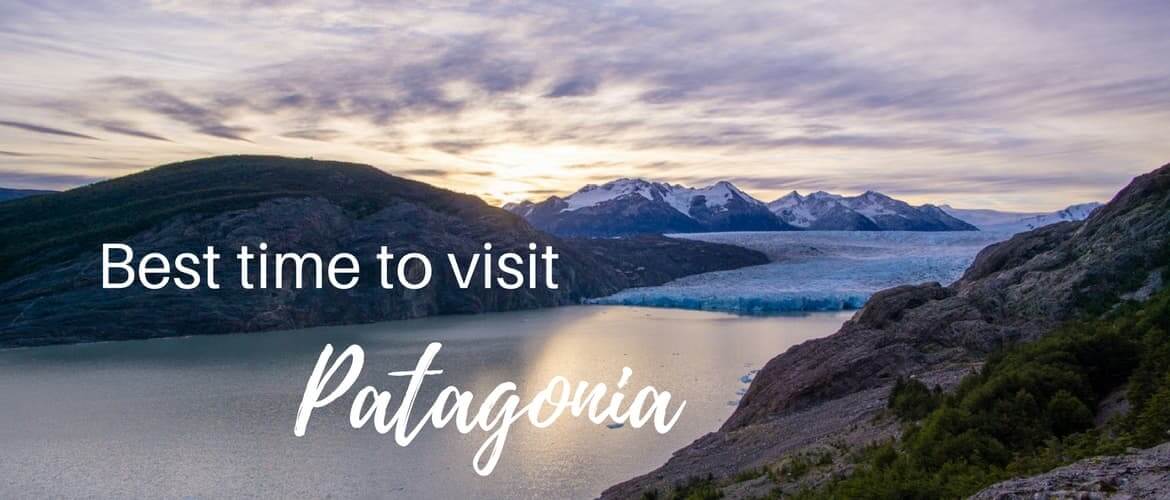


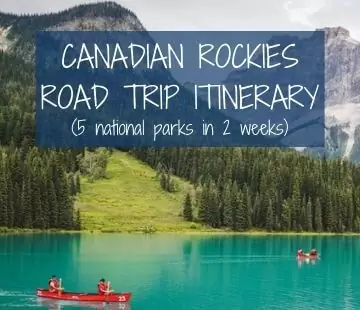

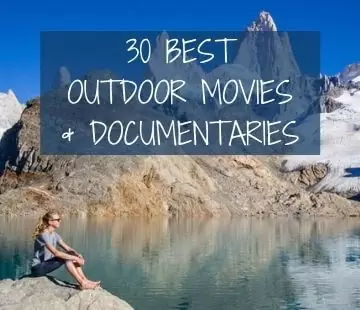





Is it possible to drive down the carretera austral in September/Oktober
or will many roads be closed due to snow or flooding??
It is totally possible. Mudslides can occasionally happen but a friend of mine drove in August and it was fine.
We land in Santiago sept 10 the. Were thinking of bus to Mendoza, fly to bariloche bus to puerto Monty and fly back to Santiago. Is there lots to see in the areas described? Thinking of renting car in bariloche area.
You described a huge area where there’s lots to see and do, just depends what you’re looking for.
Trying to decide between visiting Patagonia early to mid March or mid/late March to early April. Is there a big weather difference between these time periods?
This is very hard to tell and depends on the year. Generally, few weeks here and there won’t make much difference.